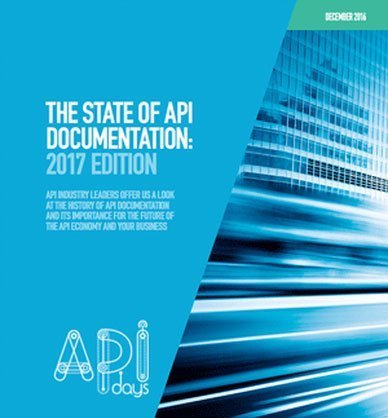This article by Matthias Biehl from Software AG talks about API strategy for banks and FinTechs in an open banking world. The article will look at the past, present, and future of banking products to understand what strategies we should apply.

If we look at this step by step, we focused on efficiency and creating a mass-market in banking products in the past. We had different banking products, such as a current account, a credit card, a trading account, a savings account, mortgages, and a retirement account. All of these have been bundled together into a big mass-market banking product. If you have your mortgage at a bank, it’s very likely that you also have other banking products at this bank, a current account or your credit card. That results from this mass-market banking strategy that we had in the past.
With open banking and open finance, we started this mass-market banking offer that we have created. What we do now is unbundling—unbundling means that we take this big offer and create separate products for it. Of course, these products are technology products represented in the form of an API. For example, a credit card API, a current account API, and a savings account API. This is what we call open banking.
We also have other APIs emerging in this area, such as retirement accounts, trading accounts, mortgages, and loans. This more considerable scope is called Open Finance. It all moves in the same direction. It’s an unbundling of this big mass-market banking offer, making it available in the form of APIs that can be embedded.
If we look in the future, we’re going to start at precisely that step that was the output of open banking, where we have APIs in all of these different subcategories of banking. These are the financial services industry APIs, but a similar movement is also happening in other industries. APIs are also emerging in logistics, insurance, accounting, business, management, communications, and transportation. All APIs are evolving and contributing to a lego box from which we can start building stuff. Besides the financial industry, this Lego box contains APIs of other industries that can be re-bundled, and we will now get a new bundle.
In contrast to what we had in the past, this bundle is not a purely financial services bundle; it also contains all these other aspects of other industries. For example, we get a combination of the financial services industry and logistics, or financial services industry and insurance or financial services, industry and transportation, and so on. All of this together will create a very specialized banking offer. That specialized banking offers a personalized, very attractive market for a tiny niche end-user market.
For example, Judy is a musician. And as a musician, she now has a banking app specially created for musicians. It contains many features; your account and credit cards. It also takes care of the income streams that musicians typically have, for example, Spotify.
For example, Mike is in a completely different niche. He is a frequent traveler and a businessman and doesn’t have much time. He’s traveling a lot, and he wants to take care of his finances between flights. So in this little time that he has, he wants to maximize what he can do. When he has a lot of different bank accounts from different banks, he doesn’t want to log in to all of these different banks. Suppose he gets a multi-banking app to see all of these different banking transactions happening in one place. That allows him to be efficient. That’s not necessarily something that a bank provides. Here in this example, this is provided by an airline for their frequent travelers who have precisely that kind of challenge.
There will be some mass-market offers and many specialized niche-targeted banking offers in this new market. They are a combination of different APIs for various specific types of customers. We call this distribution a longtail distribution compared to the very narrow mass markets that have few offers but very popular ones. In niche markets, you have a lot of different offers, which are each by themselves, not very popular, but taken together, they can be a very attractive market. These are called longtail markets.
So are niche markets profitable for banks? Is it a good strategy to go for one of those niches for a bank? For example, if a bank would try to cover a specific niche, would that be a good strategy? Well, the answer is no! Because if there are few people in a specific niche, it would not be very attractive to focus on that.
But using API technology, there’s a better way of addressing these niche markets and addressing those niche markets at scale and in a very efficient way.

Developers are super important; developers are now customers. Developers are super customers because they bring in a lot of end-users. That’s what gives them these superpowers and this multiplier effect.
Value Chain – Now, I want to look at this from another perspective. I want to look at it from the perspective of a value chain.

Value flows here, still from the bank, to the FinTech, who will get some value from integrating this, and to the end-user, eventually. For this received value, the end-user then will have the possibility to compensate the FinTech and potentially the bank as an API provider. Banks need to be good at exposing APIs, securing APIs, marketing those APIs, and partnering with interested FinTechs.

Technology Stack – Let us look at the technology stack and how open banking and other movements like banking as a service are changing the banking stack.



Strategies in an Open Banking Environment
On the x-axis is the “ownership of the customer relationship (internal or external).” On the y-axis is the origination of the banking product. In the middle, we have a mix; something is internal, something is external. And then, we get this three-by-two matrix, where we can look at strategies for each.
The traditional bank has everything internal, so the customer relationship is internal, and the banking product is internal.
In Banking as a service, the channel is no longer owned by the bank; the channel is now owned by someone else. The bank provides only the banking product; it is only an API provider. We have no strategy for plug-and-play banking, where a bank still owns the channel. But in addition, it sources banking products, not only from itself but also from external sources, other banks, or other FinTech players.
Then we have banking as a platform where the bank is a broker, and it has both a channel that adapts to the customer and sources its products from different sources. In addition, it provides its product also by other channels of a partner.
Then we have a strategy that’s only interesting for FinTechs that are not banks. These are the consumers of banking as a service. Of course, banks can be consumers of banking as a service. But equally, non-banks can do that as well.
Then we have a pure marketplace. And a pure marketplace means they don’t have the product; they don’t have the channel. They’re just a broker of banking as a service product in the middle.
The top two strategies are actually for non-banks that look like banks as a result of using those banking as a service offers. And the bottom four strategies are strategies that banks can apply.










